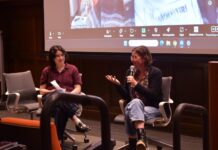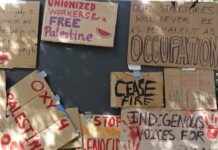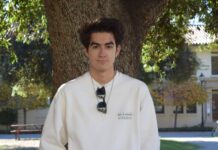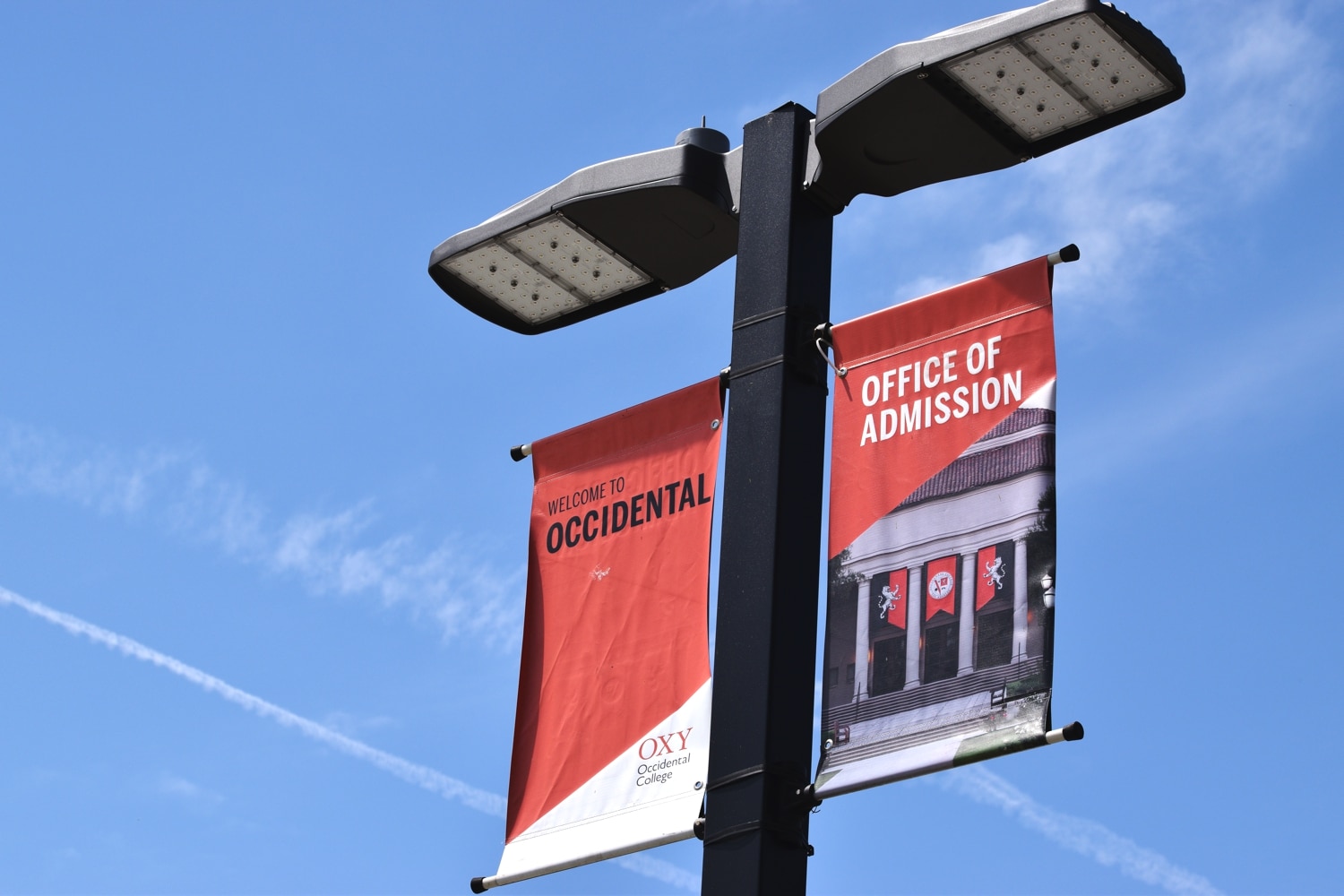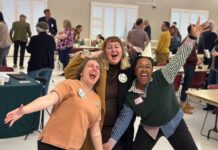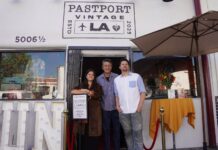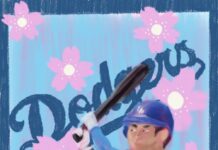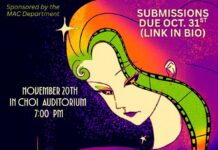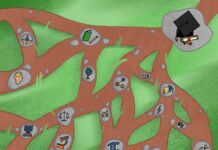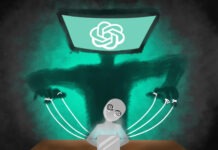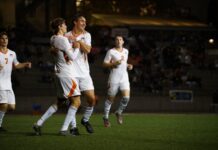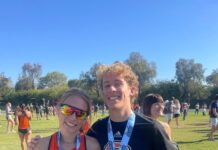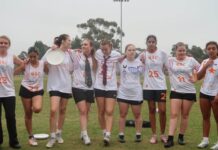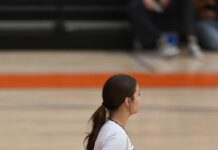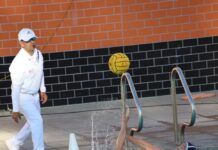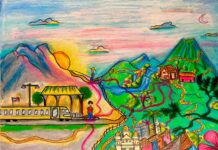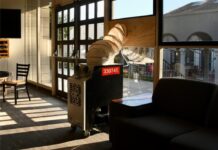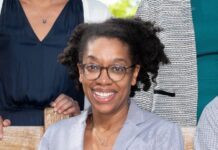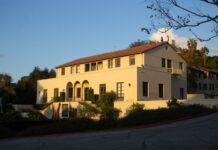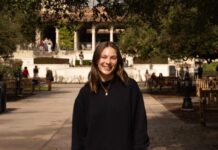Visitors to the Weingart Gallery exhibit “Anticipatio” last month were first met with mysterious instructions: “For this exhibition, each participant presents one score for you, dear visitor, to realize, create, or perform.”
A collection of 15 asymmetrically-sized and vibrantly-colored posters lined the white walls of the exhibit, each with a “score” for the visitor to contemplate. But these scores were not the musical productions that usually come to mind at the word—instead, they were sets of directions, meditations or pictures that presented the viewer with a new way to think about methods of communication.
“Anticipatio,” which opened on Oct. 29 and closed last Saturday, was an exhibit of the work produced in local artists Sarah Rara and Luke Fisbeck’s artist-in-residence class, The Open Score Workshop. The class is Occidental’s first semester-long residency program, and it concentrates on the use of scores across a variety of mediums, including movement, music, cooking and environmental activism.
“The Open Score Workshop is a hands-on workshop and collaborative research group that explores the use of ‘scores’ across disciplines as experimental, descriptive and performative devices,” Rara said in an email.
For the exhibit, Rara and Fischbeck asked students to select one of the scores they created over the semester. The gallery displayed scores from the artists and from every student in the class.
In one of the spacious gallery rooms, a photocopy of a wrinkled, torn piece of lined paper stood out amidst a wall of digitally designed posters. On an adjacent wall, two oranges sat below a poster that prompted the viewer to peel the oranges with a group.
“Depending on what kind of mood you’re in and what you’ve been doing that day, do you really want to stop and peel an orange?” Director of Occidental Arts Aandrea Stang said. “No. But maybe you do. Maybe that’s exactly the thing that you need to do.”
Although some posters stood out for their design, they were truly distinctive for the ideas they proposed to the viewer. For example, an aesthetically pleasing drawing of maggots prompted the viewer to reconsider the concept of ugliness. Instructions for a morning makeup application drew attention to how the lengthy process pulls the subject away from more productive activities.
The workshop was the brainchild of Stang, who selected Fischbeck and Rara as instructors due to their innovative approach to engaging with their audience.
“The students are required to create a score every 48 hours, and Luke and Sarah are doing the same thing,” Stang said. “They’re not asking the students to do anything that they wouldn’t do. They’re making a case for everyone working together.”
The class attracted students from a variety of majors, due to its incorporation of multiple disciplines. Urban and Environmental Policy major Mariel Rowland (senior) signed up for the class without any previous experience with the medium.
“In the beginning, I was really anxious about the scores, like everything had to be perfect, like making a masterpiece,” Rowland said. “But then I realized I can’t get that caught up in it, especially when I have to do them every two days.”
Over the course of the semester, each student was invited to share two of their scores with the class in an exercise designed to mirror the exhibit.
“We do someone’s score every week, but don’t know what the person will present,” Sonia Reza (sophomore) said. “The students are like the audience, the participants in the score.”
Students drew inspiration for their scores from everyday lived experiences. Rowland’s score “Guided Thought,” for example, was based on a topic in a Critical Theory and Social Justice (CTSJ) class.
“We were talking about Lacan and the idea of being an ‘I’ and how we create an identity that’s super locked and rigid,” Rowland said. “So, my score was about the idea of ‘we.’”
Reza was motivated to create her performative score based on an interaction between friends. Her score was a combination of three exercises she created over the semester, presented on a red poster in the gallery. It instructed viewers to attempt to communicate with one another over the obstacle of background noise.
“I was trying to convey how things in your everyday life can often come in the way of what’s important,” Reza said. “You need to get rid of your distractions and focus on what’s important.”
![]()


